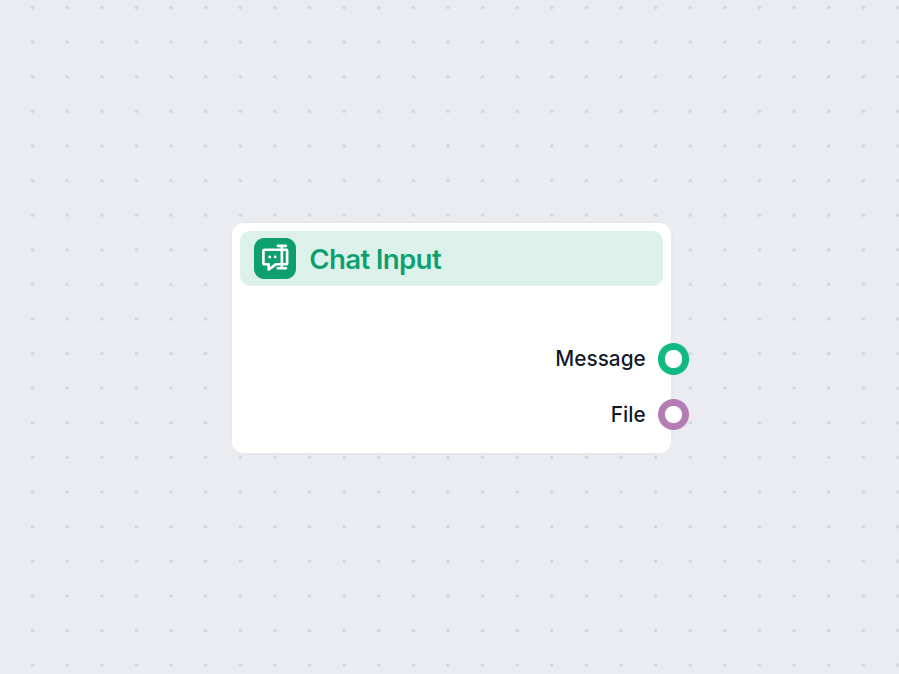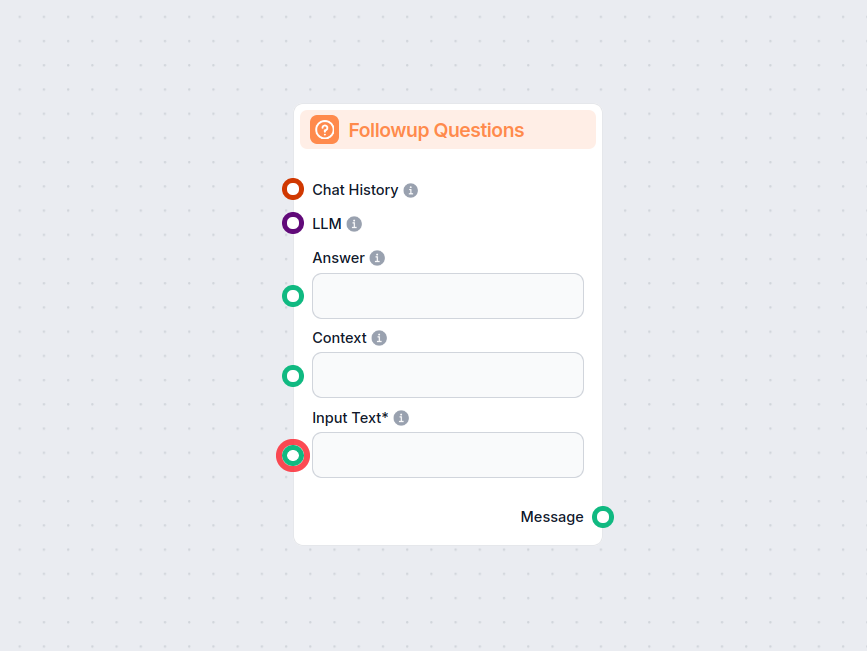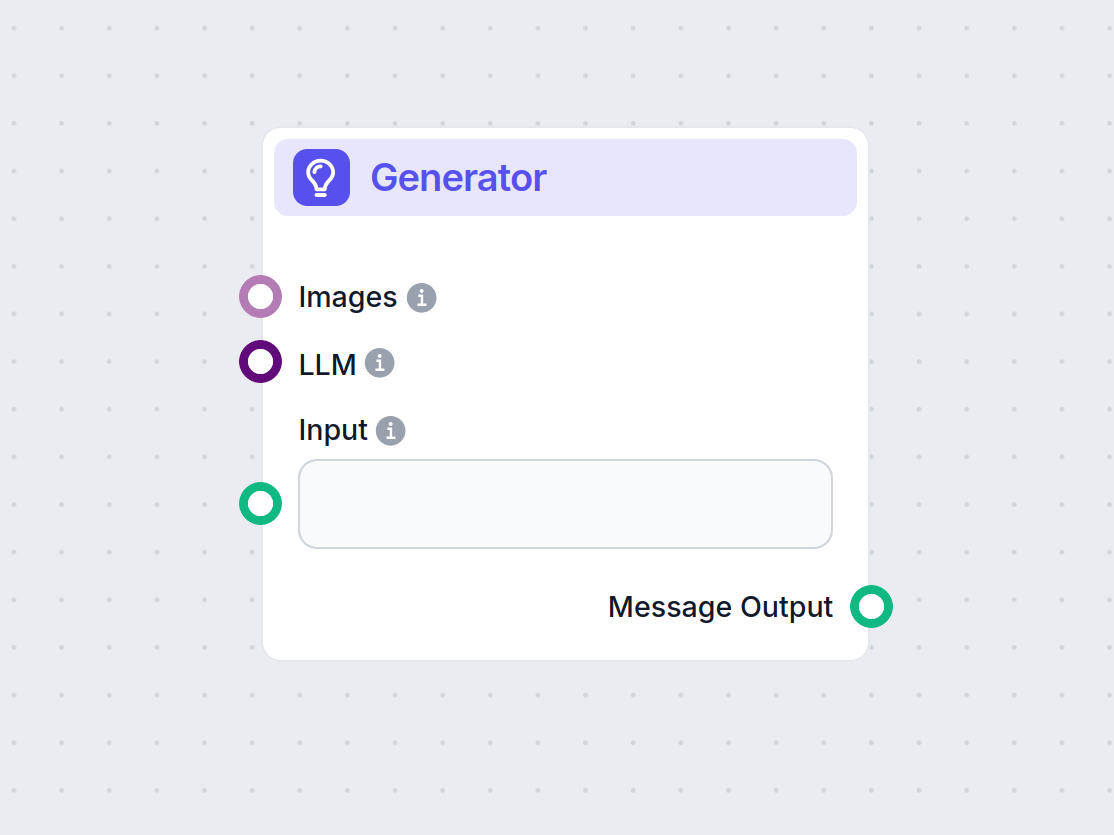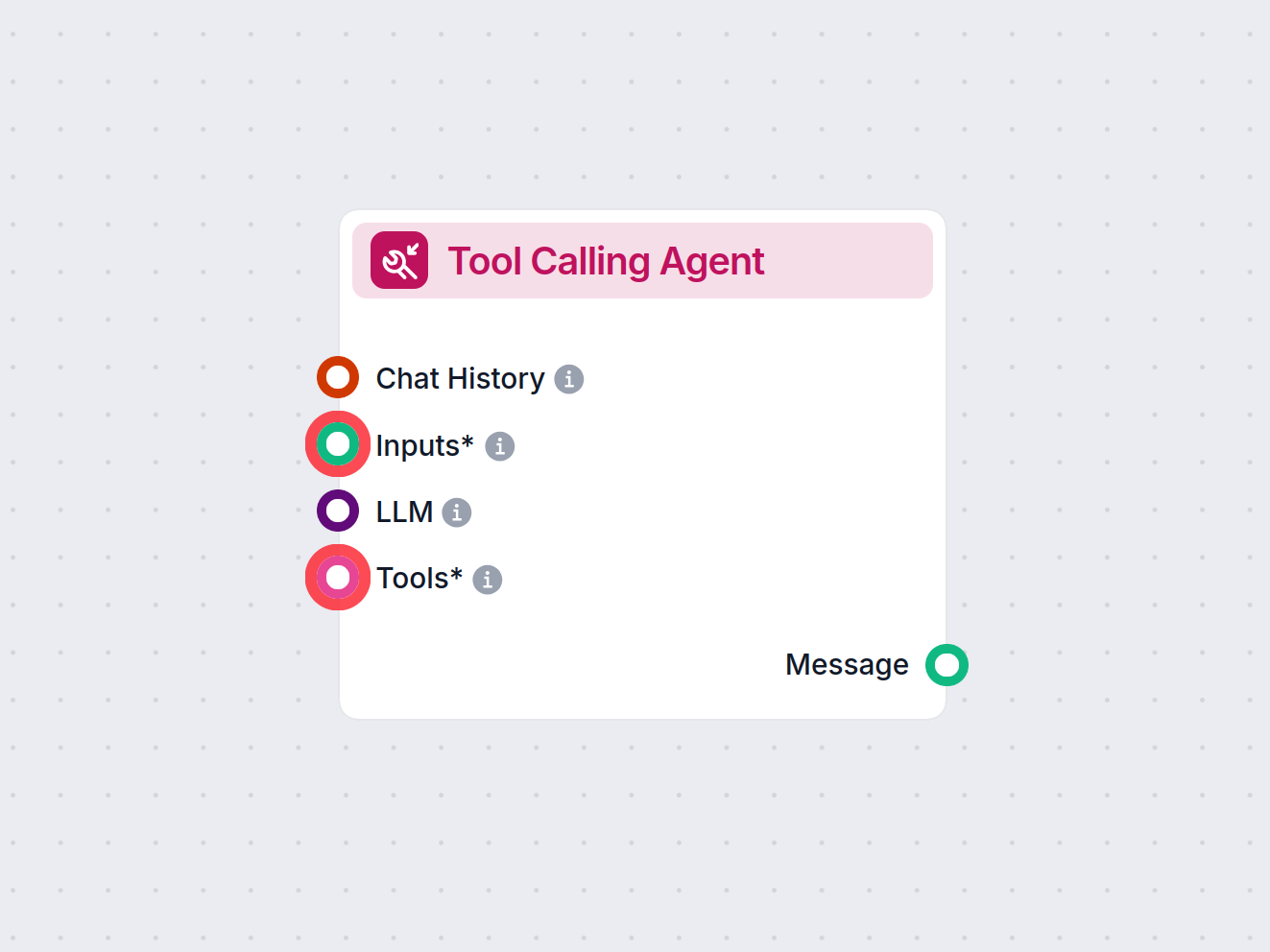
ChatInput
Il componente Chat Input in FlowHunt avvia le interazioni con l’utente acquisendo messaggi dal Playground. Serve come punto di partenza per i flussi, consentend...

Genera automaticamente domande di follow-up mirate utilizzando l’IA e il contesto della chat per guidare conversazioni più profonde e significative.
Descrizione del componente
The Followup Questions component is designed to help users generate insightful follow-up questions based on a provided context, answer, and conversation history. This functionality is especially valuable in AI-driven workflows where deepening understanding of a topic or clarifying ambiguities is important—such as in chatbots, tutoring systems, or knowledge exploration tools.
This component takes an input text (typically a user’s question or statement), and, using a language model, generates a list of follow-up questions that the user should ask to gain a deeper or clearer understanding of the topic. It can leverage additional information like the current chat history, context, and previous answers to generate more precise and relevant questions.
The component supports several input fields, some optional and some required. Here’s an overview:
| Input Name | Type | Required | Description |
|---|---|---|---|
| Input Text | String (Message) | Yes | The main text input (user query or statement) to base follow-up questions on. |
| Chat History | InMemoryChatMessageHistory | No | The conversation history, which helps the model generate better-targeted follow-up questions. |
| LLM | BaseChatModel | No | The language model to use for question generation. |
| Answer | String (Message) | No | The answer to the input text, which can help improve the relevance of the follow-up questions. |
| Context | String (Message) | No | Additional context to generate more focused questions. |
| Number of questions | Integer | Yes | Specifies how many follow-up questions to generate. Default is 5. |
| System Message | String | No | An optional system-level message to modify or steer the prompt sent to the language model. |
| Feature | Benefit |
|---|---|
| Context-aware | Generates more relevant questions |
| Model-agnostic | Can work with different LLMs |
| Customizable output | Control over number and style of questions |
| History integration | Takes prior conversation into account |
By integrating the Followup Questions component, you can make your AI-driven workflows more interactive, informative, and user-friendly.
Genera domande di follow-up pertinenti basate sull'input dell'utente, il contesto e la cronologia della chat, aiutando gli utenti ad approfondire gli argomenti.
Sì, puoi impostare il numero di domande di follow-up generate in base alle tue esigenze.
Sì, l'integrazione della cronologia della chat aiuta il componente a creare domande di follow-up più precise e contestuali.
Puoi collegare qualsiasi LLM (Large Language Model) supportato in FlowHunt per la generazione delle domande.
Usalo in flussi in cui vuoi guidare gli utenti verso una comprensione più profonda o ulteriori approfondimenti, come assistenti di ricerca, chatbot di supporto clienti o chatbot educativi.
Potenzia i tuoi flussi AI aggiungendo la generazione dinamica di domande di follow-up per conversazioni più intelligenti e coinvolgenti.
Il componente Chat Input in FlowHunt avvia le interazioni con l’utente acquisendo messaggi dal Playground. Serve come punto di partenza per i flussi, consentend...
Esplora il componente Generatore in FlowHunt: potente generazione di testo guidata dall'IA utilizzando il modello LLM che preferisci. Crea facilmente risposte d...
Esplora l'Agente di Chiamata Strumenti in FlowHunt—un componente avanzato del workflow che consente agli agenti AI di selezionare e utilizzare intelligentemente...

